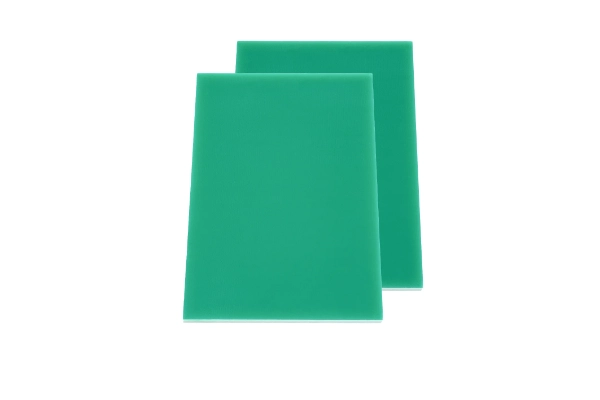- This topic is empty.
-
AuthorPosts
-
25/11/2024 at 18:20 #78335
G10 epoxy fiberglass laminate is widely recognized in industrial and consumer applications for its exceptional strength, versatility, and durability. This high-pressure laminate, created by impregnating woven fiberglass cloth with epoxy resin under heat and pressure. In this blog post, Blue Sun will share the heat and chemical resistance of G10 fiberglass boards for sale.
Composition and Structure of G10 Fiberglass Board
The heat and chemical resistance of G10 primarily derives from its composition and structure. G10 is a composite material formed by laminating layers of fiberglass cloth with epoxy resin under controlled high-pressure and high-temperature conditions. This process results in a dense, durable, and lightweight material with a uniform structure.
– Fiberglass Cloth: Acts as the reinforcing element, providing mechanical strength, rigidity, and stability. Fiberglass is inherently resistant to many chemicals and temperatures up to a threshold.
– Epoxy Resin: Serves as the matrix that binds the fiberglass layers together. Epoxy resin contributes to the board' s chemical inertness and enhances its thermal stability.
The synergy between these two components ensures that G10 offers excellent resistance to physical degradation in demanding environments.

Heat Resistance of G10 Fiberglass Board
G10 is designed to endure moderate to high operating temperatures without compromising its mechanical or electrical properties.
Thermal Properties
– Glass Transition Temperature (Tg): The Tg of G10 typically ranges from 120°C to 140°C (248°F to 284°F), depending on the exact formulation of the epoxy resin. Beyond this temperature, the material begins to soften, which can lead to a reduction in mechanical strength and rigidity.
– Continuous Operating Temperature: G10 can reliably function at temperatures up to approximately 150°C (302°F). For short-term exposure, it can withstand slightly higher temperatures without catastrophic failure.
– Thermal Conductivity: G10 has low thermal conductivity, which makes it an effective thermal insulator in electronic and industrial applications.
Performance in High-Temperature Environments
In applications like electrical insulation for transformers, circuit boards, or aerospace components, G10 boards demonstrate consistent performance under heat. However, for prolonged exposure beyond its Tg, engineers must consider alternative high-temperature laminates such as G11, which offers superior thermal stability.

Chemical Resistance of G10 Fiberglass Board
G10 is well-regarded for its chemical inertness, making it suitable for applications where exposure to harsh chemicals is a concern. The epoxy matrix and fiberglass cloth both contribute to its resistance against chemical degradation.
Resistance to Acids and Bases
G10 exhibits excellent resistance to most acids, including sulfuric, hydrochloric, and nitric acids, especially at room temperature. Its resistance to bases, such as sodium hydroxide, is also strong but may degrade slightly under highly concentrated solutions or elevated temperatures.
Organic Solvents
Epoxy-based G10 boards are impervious to many organic solvents, including alcohols, ketones, and hydrocarbons. They do not swell, crack, or lose structural integrity when exposed to solvents typically found in industrial and laboratory environments.
Limitations
Despite its robustness, G10 is not impervious to all chemicals:
– Strong Oxidizers: Prolonged exposure to strong oxidizers, such as concentrated hydrogen peroxide or chlorine, can cause surface degradation.
– High-Temperature Chemical Reactions: When exposed to aggressive chemicals at elevated temperatures, G10 may experience accelerated wear or chemical attack, especially at the interfaces of its epoxy resin.
Use in Corrosive Environments
In industrial applications like chemical plant equipment, G10 components such as washers, gaskets, or insulators demonstrate exceptional longevity, even in corrosive atmospheres. Proper material selection, however, remains crucial when operating near its chemical resistance limits.
Additional Factors Impacting Resistance
Several variables influence the heat and chemical resistance of G10 fiberglass boards:
1. Thickness: Thicker boards tend to exhibit higher thermal and chemical resistance due to increased material volume and density.
2. Moisture Absorption: G10 absorbs a minimal amount of moisture (typically less than 0.10% under standard conditions). However, in high-humidity environments, slight moisture uptake could impact its insulation properties.
3. Surface Treatment: Surface coatings or finishes can enhance G10's resistance to specific chemicals or extreme temperatures. For instance, adding a UV-resistant coating can protect against UV-induced degradation.
Applications of G10 in Harsh Environments
The combination of heat and chemical resistance makes G10 fiberglass boards indispensable in a range of industries:
– Electronics: As a base material for printed circuit boards (PCBs) and insulating components, G10 withstands heat generated by high-power electronics and resists degradation from cleaning chemicals.
– Aerospace: Lightweight and robust, G10 is used in structural components exposed to temperature fluctuations and corrosive jet fuels.
– Chemical Processing: G10 gaskets, spacers, and insulating parts endure exposure to corrosive chemicals and moderate temperatures in industrial processing plants.
Conclusion
G10 fiberglass board's resistance to heat and chemicals is a cornerstone of its high-performance capabilities. Its unique composition, thermal stability, and chemical resistance make it an exceptional material for applications in electronics, aerospace, and industrial settings. G10's ability to thrive in high-temperature environments and resist chemical attacks positions it as a key material in materials engineering.
https://www.bluesun-elec.com.cn/Is-G10-Fiberglass-Board-Resistant-to-Heat-and-Chemicals.html
http://www.bluesun-elec.com.cn
Blue Sun -
AuthorPosts
- You must be logged in to reply to this topic.